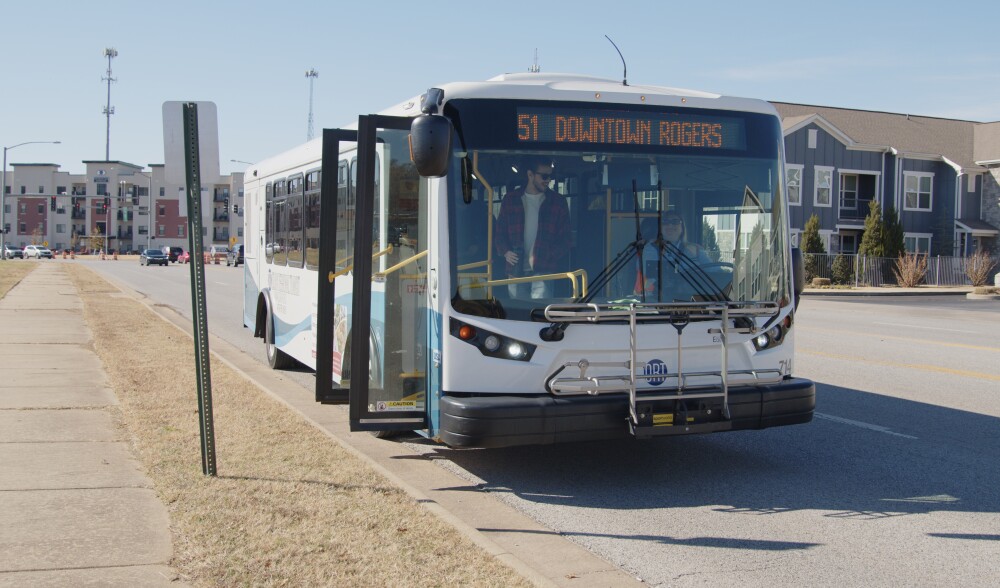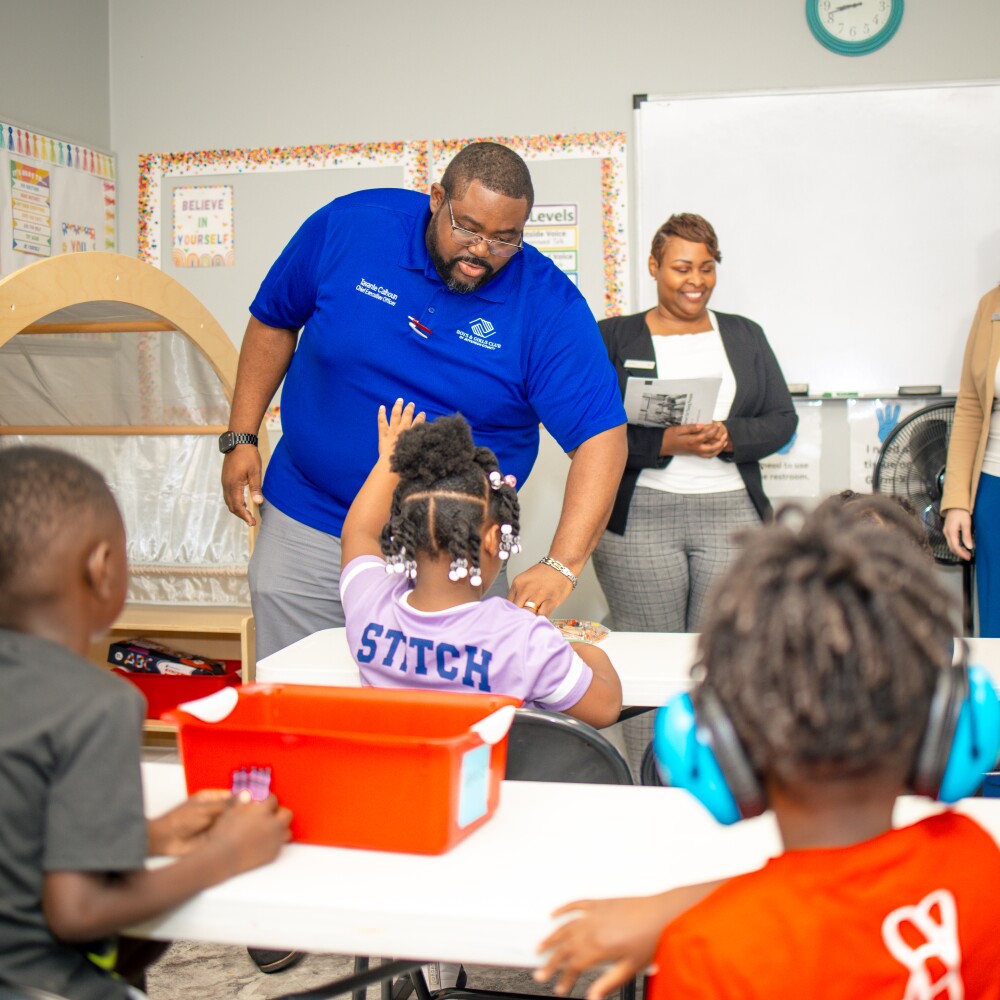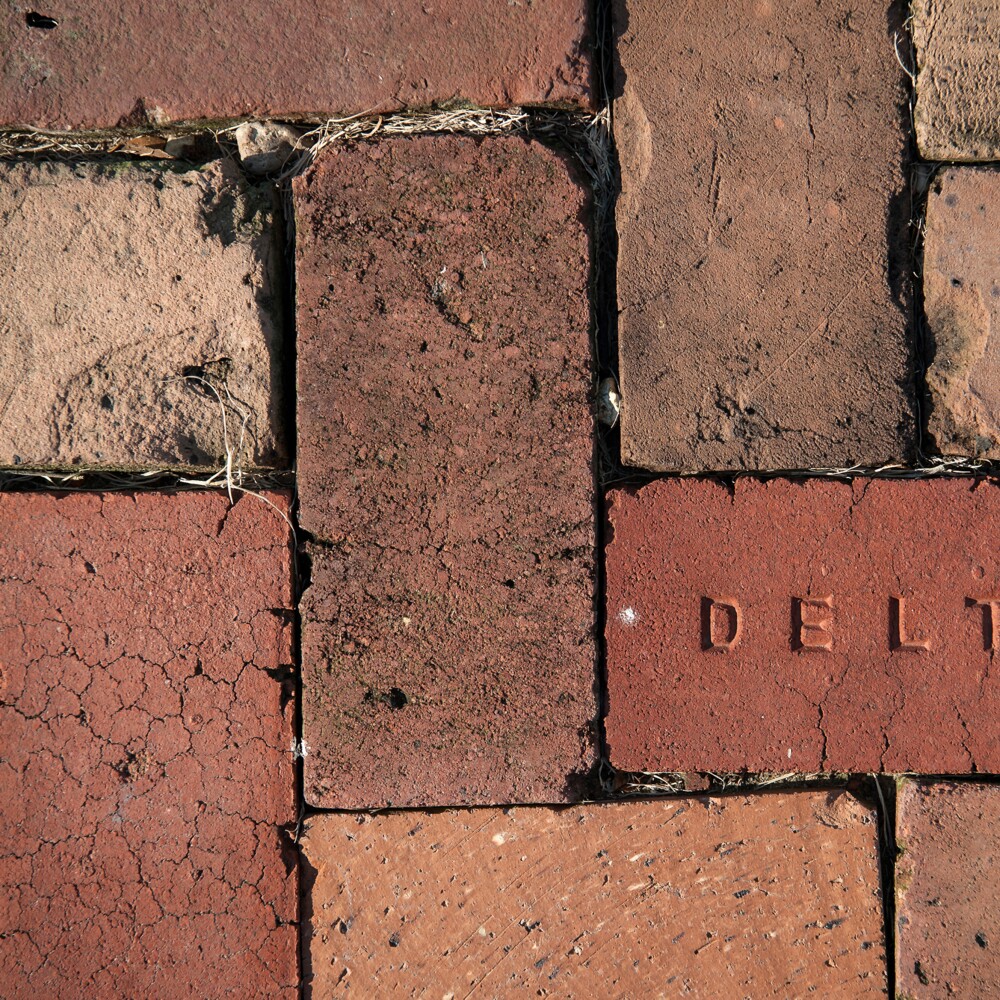Northwest Arkansas is a region on the move. But to keep moving forward, all people need the ability to move around freely.
Whether it’s getting to work or school, medical appointments or the grocery store, reliable, safe and affordable transportation is essential for all of us to thrive.
Housing and transportation are, on average, the two largest costs faced by every household in America. Here in Northwest Arkansas, like other growing regions, it’s a balance that many residents struggle to find. Pay higher housing costs and live in a walkable neighborhood? Or move farther away and drive your transportation costs up?
The data is clear, and we’re listening. Eighty percent of Northwest Arkansas residents want more and better-funded public transportation options.
At the Walton Family Foundation, we’re committed to creating a more inclusive and vibrant Northwest Arkansas – one that includes the ability of all our neighbors to have an affordable place to live and to move freely within the region – and access everything it has to offer.
While we’ve made big gains in connecting communities via trails, the reality is that many people still face real challenges when it comes to getting around.
Local resident Lisa McCool started cycling about four years ago. “The wind in my hair…It makes me feel like a kid again. I work a full-time job and I have little kids, so being able to work exercise into my regular routine is amazing,” she says.
But one challenge Lisa faces is trying to piece together safe bike routes to get where she needs to go. “We do have a couple of protected bike lanes, which are wonderful, and the [Razorback] Greenway is beautiful. But it doesn't go everywhere, and that leaves you having to choose between a street or a sidewalk if there is one.”
For other neighbors, cycling isn’t always an option. Following a brain aneurysm, Christy Kelly developed fluctuating vision loss. She and her son moved closer to the city so that she could more easily commute to her job. But like many folks who move closer to opportunity, she found her housing costs increased.
“Once you hit walkability, you lose affordability,” she says.
Now, her daily commute can change from day to day, depending on her vision. “Some days I can see well enough to drive, some days I can't. If the weather's nice, I can bike. But some days I have to figure out another solution.”
Christy occasionally uses Ozark Regional Transit’s on-demand bus system, which is helpful, but not reliable as she needs. “When you work an hourly job,” she says, “you don't get to be late.” Of current public transit in Northwest Arkansas, Christy says it's one thing to have it, “But is it reliable? Is there a schedule? Are there bus stops? Does everyone know and trust that that bus is gonna show up?”
Rogers resident Isacc Stevens shares similar concerns with current bus transportation. “I work the night shift … I can bike anywhere in Rogers in the time that it takes for a bus to show up.”
Isacc, who is also a local transportation advocate, describes current transit funding as a “chicken and egg” scenario. “People here complain about how unreliable public transit is and so they don't ride it. And the people who decide on the budget look at low ridership and say, ‘Oh, well no one's using it. Let's not fund it.”
In response to ridership and accessibility challenges, the foundation is working with Ozark Regional Transit to collect data and design public transportation that works for more people, when they need it.
The testing of on-demand transit within the system was helpful in determining where exactly people are traveling via bus. In response to this data, Rogers and Bentonville have now established fixed service from the Bentonville Community Center to downtown Rogers and back.
We’ve also supported fare-free transit to help the system recover after the pandemic. It’s a feature that new resident Mahmoud Salman appreciates. “The buses are free and this is a very good thing,” says Mahmoud, who immigrated with his family from Syria to Northwest Arkansas a few years ago. But he would like to see more weekend and nighttime service to more fully experience his new community.
Canopy NWA, a local provider of refugee resettlement assistance that works with Mahmoud’s family and others, has recently launched a transportation pilot to find responsive solutions to the needs of this community.
Other organizations, like All Bikes Welcome, are working to build more racial equity and gender diversity in cycling by providing free and low-cost outdoor programming across the region.
“We are rewriting that narrative around who bikes and who accesses the outdoors,” says executive director Rachel Ozer. “Including more people in active transportation is good for the environment. It creates more cohesive and healthy communities. And at the end of the day, it's the right thing to do for our neighbors.”
As part of our Strategy 2025, the foundation is also working with local municipal partners to create a coordinated regional approach to infrastructure that embraces and enables multiple forms of transportation – from safer streets for pedestrians and cyclists to reliable and affordable public transit like buses.
We’re listening to folks like Dane Eifling, mobility coordinator for the city of Fayetteville.
“We all know that housing is a huge area of emphasis for city planners. But transportation is every bit as important,” he says. Transportation improvements do cost money, he says, but adds that “It's a lot smarter to invest at the point of growth rather than when we're at that million-people threshold.”
Dane says simple changes, like ADA-accessible sidewalks, sheltered bus stops or adding more micromobility options like e-bikes and scooters are all choices that make a big difference in whether or not people can participate in the transportation system.
“Chances are, every individual at some point – due to age, disability, or other issues – will need something other than a car to get around. Being able to get around your environment in a safe and dignified way shouldn’t just be for some, it should be for everyone.”
We’re also listening to local elected officials on what they need to be successful.
Randall Noblett is mayor of fast-growing Cave Springs. “It’s very important to get resident input. We need to take into account the demographics of the area and what they will and will not use,” he says. Mayor Noblett is also working to ensure that new infrastructure is tied to neighboring communities, like plans for a new bike lane along the side of Highway 112 and new trails that tie into the Rogers Greenway and Trails System at Mount Hebron Park.
He says that the growth Cave Springs is experiencing is placing a strain on their current infrastructure. To solve it, “We don't need to be spending huge amounts of money, but we do need to study [solutions], and enter into them with an open mind,” like walkable development, public transit and biking.
In larger, more connected communities like Bentonville, Mayor Stephanie Orman says collaboration is key.
“There is a high quality of life that people expect here in Bentonville.” To maintain and build on this success, “We've got to look at community partners. We've got to look at employers in the area that wanna make sure that they can move their employees to and from work. We try to get in the room and have a conversation about what infrastructure we can put in place that’s clean, that’s safe, and convenient for the public.”
Mayor Orman says that when you collaborate, “phenomenal things happen. You create not just great cities, but a great region that people wanna be a part of.”
When it comes to mobility, true inclusion depends on everyone’s ability to access all that this amazing region has to offer. We hope through continued collaboration, we can support the development of accessible and affordable mobility options that can serve not only our community, but serve as an example to other growing regions across the country.





